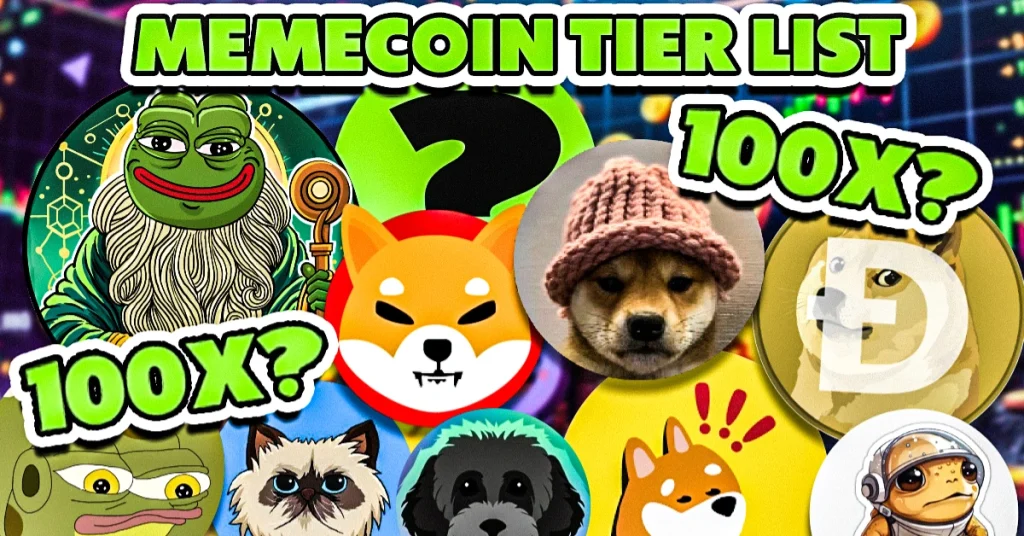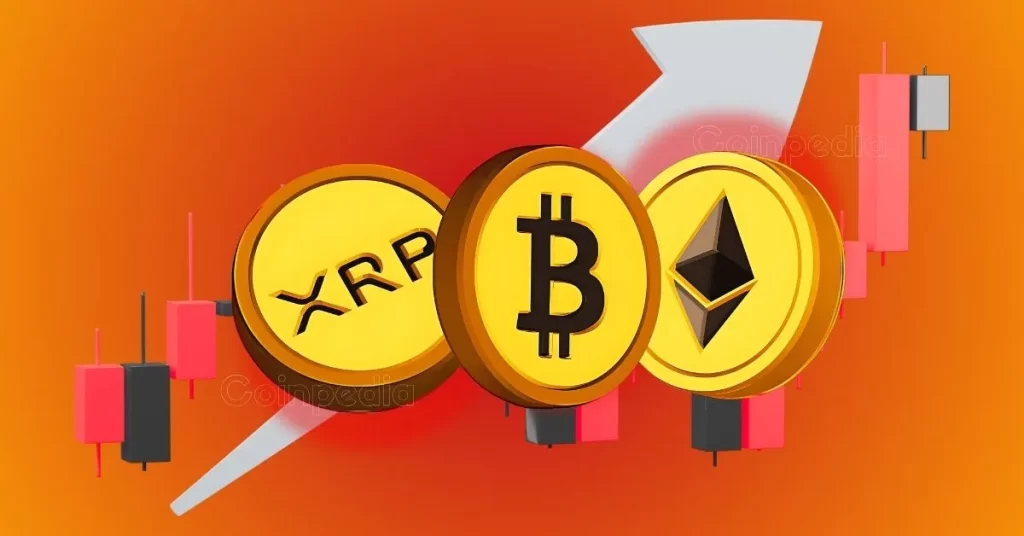
The post Owning A Piece Of The Metaverse: What Digital Land Should I Buy? appeared first on Coinpedia Fintech News
The metaverse age is rapidly drawing upon us, bringing higher numbers of people into a connected, persistent virtual reality where they can live digital lives alongside their existence in the real world.
It’s believed that the metaverse will become a place where people will work, play, socialize and learn without leaving our homes. People will be able to invest, run businesses, make money, buy and own property and assets and more besides.
So-called digital land has become a big business in anticipation of this new reality. Big enterprises including Samsung, JP Morgan, HSBC and PwC, as well as superstars like Snoop Dogg, have already bagged their first plots of metaverse land, which they’re now developing for a range of different purposes. Meanwhile, the earliest buyers have made big profits on their investments. Whereas the first plots of digital land in metaverses like The Sandbox and Decentraland sold for just a few hundred dollars, some land parcels now cost several thousands more.
What’s In It For Me?
There are a few common reasons for wanting to own digital real estate in the metaverse. One of the biggest motivations for some buyers is that they see it as an investment, and hope to resell the land in future for a much higher price. Metaverse land prices might increase for various reasons, such as if the land itself is developed, or due to its proximity to other, popular plots of land. In December 2021 for example, it was reported that three plots of land located adjacent to Snoop Dogg’s virtual mansion in The Sandbox sold for a combined cost of $1.23 million. Just as we see with physical property, digital land that’s nearby to famous landmarks or celebrity homes often carries a much higher price tag.
Other reasons to want to purchase digital real estate include becoming a landlord. In this way, it’s a similar investment, only rather than holding onto the parcel until its price increases, users simply buy a desirable plot and try to rent it out to others. Digital land in the right location is often very desirable, but not everyone can afford to buy that land outright. However, they may still be prepared to lease it.
Then there are the people who actually intend to use metaverse land, either for advertising, building a business, or something else. Some individuals and companies have developed metaverse-based shopping malls, virtual reality experiences, games, art galleries, exhibitions, virtual stadiums etc. So anyone with plans for a project in the metaverse needs the digital real estate to make it happen.
As the metaverse continues to evolve and expand, it’s likely that demand for virtual land and property will increase.
Where Should I Buy Metaverse Land?
There are dozens of popular metaverses around, and new ones keep popping up all of the time. Before choosing which metaverse to buy land in, it’s a good idea to think about what kind of project you intend to create, and then check to see which virtual world is best suited for it.
The biggest brands would most likely want to be associated with metaverses that already have a significant presence. For instance, Roblox has previously hosted virtual concerts by celebrities such as Lil Nas X, Tai Verdes and Zara Larsson. Meanwhile, Decentraland hosted a virtual fashion week that showcased brands including Estee Lauder, Adidas and Dolce & Gabbana. It has also been graced by events hosted by Paris Hilton and Deadmau5.
Bear in mind that land in the most popular metaverses tends to fetch much higher prices, especially if the plot in question is in close proximity to major attractions.
Decentraland
One of the most popular choices for digital land buyers is Decentraland, which is hosted on the Ethereum blockchain. Decentraland is best known for its Decentral Games casino, where visitors represented by digital avatars come to play high stakes Ice Poker using cryptocurrency, but it is home to many other attractions besides.
Within Decentraland, available land can be found within its structured grid system of three-dimensional virtual plots, known as LAND. The number of plots is finite, a design feature that will hopefully ensure that as demand goes up and available space decreases, land prices will increase.
Ownership of LAND is recorded on the Ethereum blockchain, and owners can use their plots to build virtual structures, host events and concerts, play games and more. LAND plots are represented by non-fungible tokens (NFTs) and identified by a coordinate system, and can be individually owned by members of the community through a proof-of-ownership contract within the corresponding NFT.
While the LAND is finite, bear in mind that Decentraland is still a big place, with over 90,000 LAND available. Each LAND parcel is a square-shaped 3D block that measures 33 feet x 33 feet, with height being unlimited. To purchase Decentraland LAND, it’s necessary to acquire MANA tokens.
Although LAND can be pricey, Decentraland is a good place for many to start their metaverse adventure because developing the plots doesn’t require any coding expertise. Instead, users can develop their plots using various tools Decentraland has put at their disposal, with dozens of pre-built structures and scenery to choose from.
Decentraland saw one of the most expensive digital land sales ever when the Metaverse Group acquired a single plot for 618,000 MANA (worth $2.4 million at the time) in Nov. 2021. It said it intended to develop the land and organize fashion shows and other commercial activities around fashion.
The Sandbox
The Sandbox shares Decentraland’s status as the most famous metaverse platform, and has a lot of similarities. It too is hosted on Ethereum, and each land parcel within it is unique, represented by an ERC-721 NFT.
Land within The Sandbox can be acquired directly from the platform’s marketplace, or from third-party NFT platforms such as Opensea. There are, and can only ever be, 166,464 lands in The Sandbox. Because it’s decentralized, just like Decentraland, land owners have the freedom to do with their land as they see fit, creating experiences like games, 3D dioramas, exhibitions, art galleries and more.
Some users have sought to acquire “estates” within The Sandbox by acquiring multiple connected land plots, an example of which is the Sandbox District. Many of these users have successfully monetized their digital land through the creation of games, or by selling digital merchandise.
The best known landowner in The Sandbox is the hip hop legend Snoop Dogg, who created the Snoop Dogg Mansion, one of its most popular landmarks. Fans are welcome to visit at any time and experience occasional concerts, and even meet and interact with Snoop himself if he happens to be hanging out in his digital lounge. He also created the Snoopverse experience complete with an early access pass for his biggest fans.
The Sandbox’s native token is SAND, an ERC-20 asset that’s used to pay for land, and goods and services sold within the metaverse. All digital items sold within The Sandbox are NFTs, but bear in mind that in addition to SAND, you must also hold an amount of ETH to pay transaction fees.
The Sandbox has created an inclusive economic structure that everyone can benefit from, which explains why it’s one of the most popular choices for gamers, digital artists and even speculators.
Project Origin
Created by Looking Glass Labs’ studio, the House of Kibaa, Project Origin is a new kind of metaverse platform with a focus on hyper-realism and building state-of-the-art facilities and experiences powered by the Unreal Engine 5, which generates extremely realistic graphics.
Whereas metaverses such as Decentraland and The Sandbox are characterized by blocky, cartoony graphics, Project Origin is all about realism, intending to create a premium digital space that will feel altogether more immersive and real. It is planning to create a total of 20 different environments inspired by the real world that will, together, accelerate the intersection of physical and digital worlds.
One of the main areas of focus is HTML5 interoperability, which will enable brands to bring existing Web2 experiences and design teams into the metaverse.
House of Kibaa held its initial land sale in April 2022, raising $2.6 million from the sale of an undisclosed number of plots, which were described as four-acre land parcels located within the consumer-focused section of its metaverse. It’s planning additional sales in future too, with a focus on B2B and brands. Just as with Decentraland and The Sandbox, land within its metaverse will be finite.
Users will be able to perform various activities in Looking Glass Labs’ hyper-realistic metaverse, with mini-games and activities personalized based on the NFTs they hold, with real-time NFT swaps and trades available. There will be user incentives too, with NFT holders able to earn rewards for engaging within its various environments. Of course, user engagement is a big focus, with the potential for life events and more.
Roblox
Roblox stands out for being one of the oldest metaverses of all, having first launched in 2006 even before the concept was established. It’s notably a centralized metaverse, which means it is controlled by its original developers.
While it shares similarities with other metaverses, one of the major drawbacks of Roblox is that it doesn’t have its own cryptocurrency token or NFTs, so play-to-earn experiences are not possible here.
That said, it’s still one of the most popular metaverses around with more than eight million developers and hundreds of millions of players. It currently boasts over 20 million separate lands, known as “experiences”, which host individual games.
Buying land in Roblox has a lot of potential for developers, who can earn money from people who play their games by selling in-game items, though they will only receive a percentage of each sale, with the rest going to Roblox itself. Of course, it’s not necessary to develop games yourself, as many brands (including WalMart) and individuals have bought land and hired developer teams to build game experiences within its metaverse. Experiences can be created within the Roblox Studio, which is a developer portal that comes complete with an array of tools for building games.
The main reason for Roblox’s success is that all of its games are ostensibly free-to-play, with monetization based on encouraging users to purchase in-game avatars and items that increase their chances of winning and help their characters to stand out.
Some of the biggest experiences in Roblox have hired famous artists to appear and perform within their game universes, attracting more players to the event. There have also been reports of developers selling entire experiences for vast sums of cash. So, while Roblox might not be decentralized, making it quite different from other metaverses, there are still good reasons to consider buying digital land here.
The Prospects Of Metaverse Land
It’s hard to say if metaverse land represents a good investment or not, because its success will depend on the idea of living a digital life in a virtual environment really catching on. What we do know is that there are many people who believe in the future of the metaverse, with big tech firms like Facebook – now known as Meta – Nvidia and Microsoft all making big investments in the space.
If the metaverse grows to become the next version of the internet, as many predict, then it seems certain that digital real estate will become an extremely useful and valuable asset. Virtual worlds have the potential to enable a wide range of immersive new experiences, products and services, and concepts like metaverse dating, socializing and collaboration have good prospects in the longer-term. In other words, there are lots of reasons to think that digital land will become increasingly sought after in the future.

 2 years ago
167
2 years ago
167














 English (US) ·
English (US) ·